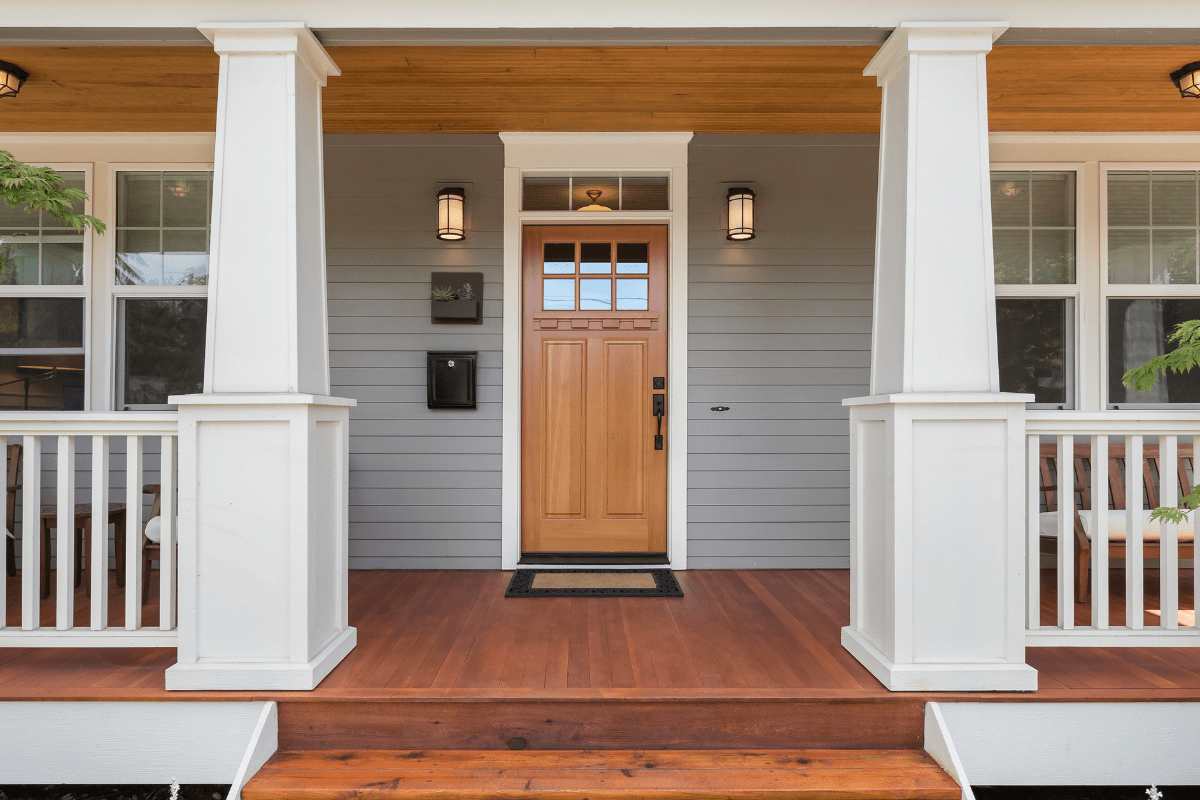If you've ever watched a tumbleweed roll past your wilted tomato plants while the thermometer hits triple digits, welcome to gardening in Nevada. Our state's extreme climate creates unique challenges that would make even seasoned gardeners from milder regions throw in the trowel, but don't despair—thousands of us have learned to create thriving gardens despite conditions that range from freezing at -50°F to scorching at 125°F.
Understanding Nevada's wild climate swings
Nevada isn't just one gardening zone—it's actually 13 different zones packed into a single state, which explains why your cousin in Reno can grow things that would fry to a crisp in your Las Vegas backyard. The difference between north and south feels like gardening on two different planets.
Southern Nevada gardeners enjoy a whopping 292-day growing season where you can harvest tomatoes in January if you play your cards right. Meanwhile, northern Nevada folks work with a more modest 167 days, which means every planting decision counts. But here's the kicker—both regions share some spectacular challenges that make gardening feel like an extreme sport.
The daily temperature swings alone can make your plants dizzy. We're talking 30-35 degree differences between day and night, which is why that gorgeous pepper plant that looked perfect at noon might be shivering by midnight. Add in our famously low 33% humidity and you've got evaporation rates that can exceed 100 inches annually in southern regions. That's right—the air literally sucks more water than we get in a decade of rainfall.
Working with your specific zone
Northern Nevada gardeners in the Reno area work within zones 6b through 7b, where winter temperatures can dip between -5°F and 10°F. This means you'll need to baby those heat-loving plants through a real winter, complete with frost warnings and the occasional snow surprise.
Down south in Las Vegas, zones 8b through 10a offer winter lows that rarely drop below 20°F. Sounds tropical, right? Not so fast. Summer brings its own special brand of torture, with July averages hitting 104°F in Vegas while Reno enjoys a comparatively pleasant 90°F.
Mastering water in the desert (spoiler: there isn't much)
Let's address the elephant in the garden—water scarcity. Las Vegas receives a measly 4.2 inches of rain annually, making it one of the driest major cities in the nation. Even Reno's 7-10 inches won't keep your garden happy without serious intervention.
This scarcity isn't just a suggestion to water wisely—it's the law. The mandatory watering restrictions in Las Vegas read like a military operation manual. You get assigned watering days (never on Sunday), can only run sprinklers for 12 minutes max, and absolutely cannot water between 11 AM and 7 PM when the sun would just laugh at your efforts anyway. Break these rules and you're looking at fines starting at $80 and escalating to $5,000 for serial offenders. Reno's restrictions are slightly more relaxed, allowing three days per week during peak season.
Setting up drip irrigation that actually works
Forget those oscillating sprinklers that send half your water allocation into the atmosphere. Drip irrigation is your new best friend, and setting it up correctly makes the difference between thriving plants and expensive water bills.
Start with pressure regulation between 20-30 PSI to prevent those annoying emitter blowouts that turn your peaceful garden into a fountain show. Your soil type determines emitter selection:
- Clay soils: 0.5-2 GPH emitters
- Sandy soils: 4-20 GPH emitters
- Trees: Multiple emitters from trunk to drip line
- Desert shrubs: 1-2 emitters per plant
The 12-minute watering method works magic for lawn areas that haven't been converted yet. Run your sprinklers for three 4-minute cycles with hour-long breaks between. This prevents runoff while encouraging roots to dig deep for water—exactly where you want them when surface temperatures hit unbearable levels.
Northern Nevada gardeners face an additional challenge: winterization. Come October, you'll need to remove timers and backflow preventers for indoor storage and drain every last drop from your lines unless you enjoy replacing cracked pipes every spring.
The great mulch debate
Nevada gardeners love to argue about mulch almost as much as they complain about water restrictions. Rock mulch suits native and desert-adapted plants perfectly, mimicking natural desert pavement while providing permanent coverage. A 2-inch layer over landscape fabric effectively suppresses weeds and can reduce water needs by 30-60%.
But here's the catch—rock mulch can increase air temperatures by 5.4°F, turning your south-facing wall into a plant torture chamber. Save the rocks for open areas and desert natives that laugh at heat. For vegetables and non-desert ornamentals, stick with 3-4 inches of organic mulch that actually improves your soil while keeping roots cool.
Conquering Nevada's concrete-like soils
If you've ever tried digging in Nevada soil with a regular shovel, you probably ended up with sore arms and a newfound respect for jackhammers. Our alkaline soils typically range from pH 7.5 to 9.0, which locks up nutrients faster than a Vegas casino vault.
The high pH causes iron chlorosis, that frustrating condition where leaves turn yellow while veins stay green, making your plants look like they're auditioning for a zombie movie. The solution? Elemental sulfur at 1-2 pounds per 100 square feet worked into the top 6 inches of soil. The effects last 2-3 years, giving you time to actually enjoy your garden instead of constantly fighting chemistry.
Breaking through caliche (or going around it)
Then there's caliche—nature's concrete layer that lurks 1-4 feet below the surface throughout the Las Vegas Valley. This calcium carbonate cement can extend 6 feet thick, turning simple planting into an archaeological excavation.
For small planting holes, you might succeed with a pickaxe or jackhammer, though your neighbors might question your sanity. The smarter solution? Build raised beds right over the caliche. Your back will thank you, and your plants won't know the difference.
When planting trees, you must create drainage holes through the caliche layer. Otherwise, you've essentially created an underground bathtub that will drown roots faster than you can say "root rot."
Creating soil that doesn't suck
Whether you're dealing with concrete-hard clay or sand that won't hold water for five minutes, the answer remains the same: organic matter, and lots of it. Work 2-4 inches of compost into the top 8 inches of soil for new beds. After that, annual additions of 1-2 inches maintain the magic.
For container gardens, ditch the native soil entirely. The popular Mel's Mix combines equal parts peat moss (or coconut coir for the environmentally conscious), vermiculite, and blended compost. Or try this Nevada special: 40% quality topsoil, 40% compost, and 20% perlite. Your container plants will think they've moved to garden paradise.
Choosing plants that won't just survive—they'll thrive
Success in Nevada starts with plant selection. Trying to grow water-loving Kentucky bluegrass here is like trying to raise penguins in Death Valley—technically possible with enough resources, but why torture yourself?
Native plants offer the path of least resistance. Desert marigold (Baileya multiradiata) blooms nearly year-round with zero fuss, while brittlebush (Encelia farinosa) produces cheerful yellow flowers on silver foliage that actually reflects heat. For hummingbird fans, firecracker penstemon (Penstemon eatonii) thrives in zones 4-9, proving that beautiful doesn't mean high-maintenance.
Vegetables that laugh at heat
Yes, you can grow vegetables in Nevada, but variety selection makes or breaks your harvest. Forget those heirloom tomatoes bred for cool English summers. You need heat warriors like 'Celebrity' and 'Heat Wave II' that keep producing when temperatures soar above 95°F.
Armenian cucumber outperforms traditional varieties by staying sweet and crisp in extreme heat. For squash, 'Yellow Crookneck' handles our conditions well, while the local heirloom 'Moapa' shows remarkable pest resistance—probably because even the bugs find our climate challenging.
Fruit trees for the desert
Fruit production in Nevada requires varieties selected for low chill hours and heat tolerance. Figs like 'Brown Turkey' need only 100 chill hours, while pomegranates require just 150. These Mediterranean natives feel right at home in our desert conditions.
The real champions? Jujubes, which tolerate both 100°F heat and -10°F cold. They're basically the Chuck Norris of fruit trees. Grapes also succeed when grafted onto drought-tolerant rootstock, with 'Thompson Seedless' and 'Flame Seedless' producing reliably in our climate.
Timing your garden like a Vegas pro
In southern Nevada, the growing season starts in January when you can plant cole crops outdoors. By mid-February, warm-season transplants can go in the ground, assuming you're not hit by a rogue frost. The beauty of our long season means succession planting—as soon as one crop finishes, another goes in.
Northern Nevada requires more strategic timing. Start seeds indoors 6-8 weeks before the average May 6 last frost. Cool-season crops can brave the outdoors 2-4 weeks before this date, but warm-season plants must wait until after May 15 when soil temperatures consistently exceed 60°F.
Protecting plants from temperature extremes
Frost protection in the north involves row covers that protect to 20°F while allowing 85-90% light transmission. Those walls of water surrounding tomatoes aren't just garden decoration—they create microclimates that enable earlier planting.
Summer heat protection proves equally critical. When temperatures hit 90°F, break out the shade cloth. White cloth outperforms black by reflecting rather than absorbing heat. Use 30% shade for heat-tolerant crops and 50% for leafy greens that prefer cooler conditions.
Finding help and inspiration
The University of Nevada Cooperative Extension maintains demonstration gardens that prove desert gardening success is possible. Their Las Vegas facility showcases 4,500 plant species across 7 acres, all thriving within water restrictions. These gardens demonstrate 30-60% water reduction compared to traditional landscapes while requiring 60-70% less maintenance after establishment.
Master Gardener volunteers answer the helpline at 702-257-5556 in Clark County, fielding questions from frustrated gardeners who've just discovered their soil pH or lost another plant to heat stress. These volunteers complete extensive training, so their advice comes tested in local conditions.
Financial incentives for going water-wise
The Southern Nevada Water Authority offers rebates up to $5 per square foot for grass replacement. Since 1999, these programs have converted 241 million square feet of turf, saving 203 billion gallons of water. That's real money back in your pocket for creating a garden that actually makes sense in the desert.
Local success stories prove the possibilities. Full Circle Compost in Reno transformed a traditional lawn into an edible xeriscape, achieving 2-3x water reduction while growing food. The Springs Preserve demonstrates 300+ drought-tolerant species across 8 acres, showing that water-wise doesn't mean boring.
Making peace with the desert
Nevada gardening succeeds when you stop fighting the desert and start working with it. Those extreme temperature swings, minimal rainfall, and concrete-like soils that seem designed to defeat gardeners? They're just part of the adventure.
Choose plants that evolved for these conditions. Install drip irrigation that delivers water where it counts. Amend your soil until it actually resembles soil. Time your planting to work with natural cycles, not against them. Most importantly, connect with other Nevada gardeners who've figured out these tricks through years of trial and error (emphasis on error).
Whether you're growing native wildflowers that paint the desert with spring color or harvesting homegrown tomatoes while your friends back east shovel snow, Nevada gardening offers unique rewards. Sure, it takes more planning, different techniques, and plants tough enough to survive what feels like gardening on Mars. But when you bite into that perfectly ripe desert-grown tomato or see hummingbirds visiting your penstemon, you'll understand why thousands of us wouldn't garden anywhere else.
The desert may be harsh, but it's also honest. Work with it, respect its limits, and it will reward you with a garden that's both beautiful and sustainable. Just remember to water before 11 AM—those fines are no joke.





